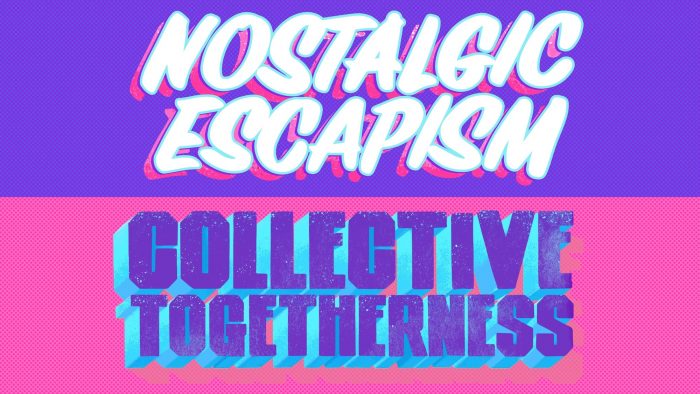Investing in the right agency is always important. Yet, there are times when there is so much at stake that you absolutely cannot afford a misstep when it comes to hitting success metrics, deliverables, or deadlines. When the stakes are high, consider asking your agency to tie fee into results.
Is your agency designing for their peers and the next industry award show instead of focusing on your customers and bottom line? Do they talk a good game, yet leave you wondering if they are experts in their field or merely parroting the latest industry talking points? Do they understand entrepreneurial risk, and what’s at stake for you? A capable agency should always have the client’s success objectives in mind. But that’s not always what happens.
So how do you fully align your agency with your objectives and essential measurements of success? One way to test your agency’s confidence in delivering results is to ask them to put compensation at risk.
Why use performance-based pricing?
It’s a dirty secret, but the agencies you are considering hiring are staffed with designers who don’t always consider the effectiveness of their work. This disregard can go all the way to the top of the chain, where the agency leads can be more focused on winning awards, judging awards, and impressing their peers than hitting your success metrics.
There can also be a big disconnect between an agency’s new business team which convinces a client to part with their cash, and the team that produces the work. Several of our competitors have an ‘A-team’ that brings in new business, but a ‘B-team’ that executes.
A few years back I walked through the Chelsea art district in NYC and saw a billboard that read: “If you want to know how much a gallery values a piece of art, try selling it back to them.” It highlighted the difference between the gallery sales pitch, and how much the gallery actually values the work they sell.
At Vault49, we believe so strongly in the effectiveness of our work that we are often willing to ‘buy it back’ from our clients, in the form of putting compensation at risk.
How does performance-based pricing work?
1. Be clear on your desired future-state.
What do you want to achieve, and what is the value to you, personally and professionally? It’s important to be clear not just about where you want to take your business performance but also the ways in which it will enhance your life. Objectives are best when addressed in human terms, not just in a data vacuum. It allows your agency partner to really share your vision of progress.
2. Determine the metrics of success.
When a company wants to tie fee to results, it is essential to be able to gauge the impact of design. There can be no progress without measurement. With the growing importance of digital, it has become much easier to measure the impact of marketing efforts in some areas, but knowing what to measure is more complicated than ever.
I could write an entire article dedicated to the different kinds of metrics that can be used. What’s important is that, as a client, you commit to a) the data that you will use to determine success, and b) provide guidance to your agency partner on progress.
3. Know the opportunities and pitfalls.
You need to be able to identify the challenges or dangers that must be overcome to meet your objectives (both marketplace and internal). What opportunities are ripe to be capitalized on? What strengths already exist that your agency can lean into?
A good agency partner will understand your business and industry as well as you do, and this is key to achieving your goals. Your agency needs to have a formidable grasp of factors that could impact results, which will in turn ensure that realistic success metrics can be set.
4. Commit to a strategic partnership of equals.
Tying fee into results is not an exercise in buying deliverables on the cheap. Putting compensation at risk is a discussion amongst equals, and the client/vendor relationship doesn’t apply.
You’re essentially going into business with your agency for the term of the engagement, and they will have a vested stake in your success. You should expect them to be even more vocal in expressing their expertise because their margin is on the line. Not every client enjoys such a dynamic and opinionated agency partnership.
What’s the trade-off?
Tying compensation to results involves a balancing of risk. By asking your agency to reduce their upfront compensation and, therefore, your initial financial risk, there must be an incentive. Such a trade-off is typically in the form of payment that exceeds the ‘book price’ for the job when metrics have been demonstrably achieved. This is usually in the form of cash or equity.
The amount of compensation at risk can vary substantially, but I suggest the minimum should be 20% of the project fee. That’s enough to ensure agency principals are taking an active role in the project and keeping the team laser-focused on your success metrics.
The scale can tilt to putting 100% of the fee at risk, but that requires an incredibly tight partnership, which is part friendship and part business. Naturally, trust has to be built for this kind of relationship, and putting 100% of the fee at risk is never appropriate for a first engagement. It might take several projects to get to this stage. The payoff to the agency on the successful delivery of a project with 100% of the fee at risk would be a multiple of the standard project fee.
This approach is not a way to buy design on the cheap; it is a way to get closer to a guarantee of success on critical engagements.
When is it a bad idea to tie fee to results?
Sometimes tying fee to results isn’t the best solution. Here are three scenarios in which a more conventional fee arrangement is probably preferable.
1) When it takes multiple agency partners to achieve your targets, success is effectively out of the hands of one agency. You have to find clear metrics that your agency can impact.
2) The procurement departments of national and international clients really do not like this approach. It’s not that it’s a bad idea; it’s just that in our experience, the conversation is a non-starter. Procurement wants to buy commodities and work in fixed terms, not future value. This approach doesn’t serve those companies well, but it makes the job of procurement easier to use fixed-fee engagements. In that scenario, they can directly compare an agency against historical prices paid and current competitor quotes.
3) When senior decision-makers are one-step removed, such an approach is not possible. Again, this is more often the case with national and international clients.
When might we say no to performance-based pricing?
As an agency, we look at risk as an investment portfolio. Some jobs are guaranteed payments with low risk (our fixed-return investments). Some have partial fee at risk (our mid-cap portfolio). Then there a select few in the high-risk/high reward category for projects we think have great potential and involve partnering with committed clients (our emerging market portfolio).
On other occasions, we might feel that client objectives are not realistic, and we’ll be clear about what results we think we can achieve. For instance, an engagement to evolve the core packaging of an established brand to stay relevant to consumers might not see dramatic short-term benefits but could save the brand long-term. In this scenario tying fee to Y1 revenue performance wouldn’t be appropriate. A more appropriate success metric might be to survey brand perception among new and existing customers using a clearly defined pre-launch benchmark, which is then compared against data captured over a one-year post-launch timeframe.
At Vault49, we put a lot of energy into discussing our clients’ needs and coming up with creative fee arrangements that best fit each client’s goals. If you’re interested in working with us and exploring a fee tied to results, contact us.
anna
Jonathan Kenyon, Co-Founder
LINKED IN










